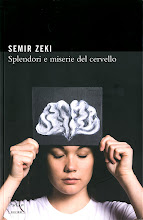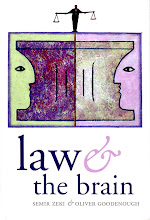This morning I heard an interview with an economist on the World Service of the BBC. He told us that no one knows the extent of the liabilities that the banks have and no one really has a clear solution to the economic problems. Asked if President Obama has the right strategies for solving the economic problems, he replied that “he has the right strategists”,
And then this jibe…
“Unlike Senator McCain who did not even know that there are economic strategists” or words to that effect.
Well, are there any?
If there are, are they anything but strategists in name?
They do not know the liabilities, they did not foresee the extent of the economic disaster, and they do not have the solutions.
So, is Senator McCain not right when he professes not to know that there are any economic strategists?
Given the mess that these so-called economic strategists have got us into, the wonder is that anyone believes that there are economic strategists.
There may be many criticisms that could be leveled against Senator McCain.
This is not one of them.
Thursday, January 22, 2009
Sunday, January 18, 2009
Creativity and the richness of brain concepts
In two recent blogs, I argued that self-censorship, whether known or unknown, is an unwelcome brake on creativity; it stifles self-expression and hence prevents a work from reaching the heights of great art. But, as I have argued in my recent book Splendors and Miseries of the Brain, it is not the only impediment. I view all art as an effort to translate brain concepts into a work. These brain concepts are synthetic ones – the result of many experiences. But a single work of art, or even a series of works, more often than not cannot translate these synthetic concepts adequately. Yves Saint Laurent once said (I think to Christian Lacroix) that he suffered greatly when creating. He is not alone in that. Most artists do the same and say as much.
One, very common, way of avoiding this difficulty is to abandon all attempts at creating a work; another is to leave it unfinished. But Balzac in particular highlights a third way, which also ends in failure. In his The Unknown Masterpiece (Le Chef-d’œuvre inconnu), he writes of a painter who progressively destroys a painting through the richness of concepts in his brain, by trying to put too much into the work. When he finally allows others to see the painting, on which he has been working secretly for 10 years, they see nothing but “a mass of confused colours contained within a multitude of bizarre lines”. Of it Balzac wrote that it was about “a work and its execution strangled by the great abundance of the creative principle”, which I translate into the richness of the synthetic concepts in the brain.
It ends, of course, with the suicide of the artist, just as in Zola’s novel, The Masterpiece (L’Œuvre), the painter Lantier commits suicide because of the richness of concepts in his brain.
It is interesting to note that both Cézanne and Picasso greatly admired Balzac’s The Unknown Masterpiece. Picasso was so taken by it that he purchased (or rented) the apartment in Paris in which it was set. Of the principle character in the short novel (Frenhofer), Cézanne said, “Frenhofer, c’est moi”.
The novels of Balzac and Zola constitute, in this context, very interesting neurobiological documents. But they do not address, and neither has neurobiology to date, the mechanisms that drive an artist to want to create, often desperately. It is an extremely interesting problem for neurobiology, which stands to gain a great deal from learning about the problem by studying what the great creative artists have had to say about it.
One, very common, way of avoiding this difficulty is to abandon all attempts at creating a work; another is to leave it unfinished. But Balzac in particular highlights a third way, which also ends in failure. In his The Unknown Masterpiece (Le Chef-d’œuvre inconnu), he writes of a painter who progressively destroys a painting through the richness of concepts in his brain, by trying to put too much into the work. When he finally allows others to see the painting, on which he has been working secretly for 10 years, they see nothing but “a mass of confused colours contained within a multitude of bizarre lines”. Of it Balzac wrote that it was about “a work and its execution strangled by the great abundance of the creative principle”, which I translate into the richness of the synthetic concepts in the brain.
It ends, of course, with the suicide of the artist, just as in Zola’s novel, The Masterpiece (L’Œuvre), the painter Lantier commits suicide because of the richness of concepts in his brain.
It is interesting to note that both Cézanne and Picasso greatly admired Balzac’s The Unknown Masterpiece. Picasso was so taken by it that he purchased (or rented) the apartment in Paris in which it was set. Of the principle character in the short novel (Frenhofer), Cézanne said, “Frenhofer, c’est moi”.
The novels of Balzac and Zola constitute, in this context, very interesting neurobiological documents. But they do not address, and neither has neurobiology to date, the mechanisms that drive an artist to want to create, often desperately. It is an extremely interesting problem for neurobiology, which stands to gain a great deal from learning about the problem by studying what the great creative artists have had to say about it.
Friday, January 2, 2009
Artistic creativity and the brain
I wrote a blog in May in which I discussed the improvisations of the jazz pianist, Tord Gustavsen. In it, I put forward the view that great artistic achievements must be free of all censorship, and above all self-censorship which, I imagined, may possibly be imposed by activity in the frontal lobes of the brain. In this context, I was very interested to read about an imaginative experiment in a recent paper by Charles Limb and Allen Braun, published in PLoS One. They studied the activity in the brain of professional jazz pianists while they (the pianists) were improvising. There is much of interest in this paper, but here I concentrate on one result which I found especially exciting in view of what I said in my earlier blog. Limb and Braun found that there was extensive de-activation in the frontal cortex as well as in those areas of the brain that are thought to regulate emotions. The authors write that the frontal areas that were de-activated in their study are thought to be important for the conscious monitoring, evaluation and correction of behaviour:
“The [frontal cortex] may be involved in assessing whether such behaviors conform to social demands, exerting inhibitory control over inappropriate or maladaptive performance”
And there you have it!
Any artistic achievement that is tailored to conform to social demands rather than to the real, uninhibited, feelings of its creator, is destined not to reach the heights of achievement, or even fail. It is only when an artist is dis-inhibited that he or she can reach the heights of artistic achievement.
This is perhaps what Wagner and Schopenhauer meant when they said, in a somewhat clumsy way, that an artistic work must “flow from the sub-conscious”, which I interpret to mean without self-censorship. This is perhaps what Proust also meant when he wrote in his Contre Sainte Beuve, “Every day, I become more aware that it is only outside [intelligence] that the [artist] can attain something of himself and the only material of art” (see my earlier blog).
It is at any rate wonderful to have in this recent work a neurological insight into a prized characteristic of all art, but especially of jazz and dancing.
“The [frontal cortex] may be involved in assessing whether such behaviors conform to social demands, exerting inhibitory control over inappropriate or maladaptive performance”
And there you have it!
Any artistic achievement that is tailored to conform to social demands rather than to the real, uninhibited, feelings of its creator, is destined not to reach the heights of achievement, or even fail. It is only when an artist is dis-inhibited that he or she can reach the heights of artistic achievement.
This is perhaps what Wagner and Schopenhauer meant when they said, in a somewhat clumsy way, that an artistic work must “flow from the sub-conscious”, which I interpret to mean without self-censorship. This is perhaps what Proust also meant when he wrote in his Contre Sainte Beuve, “Every day, I become more aware that it is only outside [intelligence] that the [artist] can attain something of himself and the only material of art” (see my earlier blog).
It is at any rate wonderful to have in this recent work a neurological insight into a prized characteristic of all art, but especially of jazz and dancing.
Subscribe to:
Posts (Atom)









 Contact us
Contact us